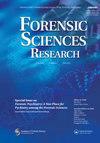Utility of Osteoarthritis as an Indicator of Age in Human Skeletal Remains: Validating the Winburn and Stock (2019) Method
IF 1.4
4区 医学
Q3 MEDICINE, LEGAL
引用次数: 0
Abstract
In forensic anthropology, and biological anthropology more broadly, age estimation is a crucial element of the biological profile. The development of osteoarthritis (OA) is correlated with age and, in 2019, Winburn and Stock published a method of estimating age in a sample of 408 white American individuals using OA presence/absence. The current study expanded the original study by testing its accuracy on a more diverse sample, including black, indigenous, and people of color (BIPOC). This served to test whether embodied inequity from lived experiences may preclude the ability of the OA presence/absence method to estimate age at death. This study’s results demonstrated both that the original methodology was validated, and that the approach was accurate at estimating the age of death of BIPOC individuals. Furthermore, this study revealed that the hip and shoulder were highly consistent and reliable and are recommended for use as the strongest indicators of age at death, while the TMJ and ankle performed poorly and should not be used for age estimation.骨关节炎作为人类骨骼遗骸年龄指标的效用:验证Winburn和Stock(2019)方法
在法医人类学和更广泛的生物人类学中,年龄估计是生物剖面的关键要素。骨关节炎(OA)的发展与年龄相关,2019年,Winburn和Stock发表了一种方法,利用OA存在/不存在的情况,对408名美国白人样本进行年龄估计。目前的研究扩展了最初的研究,在更多样化的样本上测试了它的准确性,包括黑人、土著人和有色人种(BIPOC)。这是为了检验来自生活经历的具体不平等是否会妨碍OA存在/不存在方法估计死亡年龄的能力。本研究的结果表明,最初的方法是有效的,并且该方法在估计BIPOC个体的死亡年龄方面是准确的。此外,本研究表明,髋部和肩部高度一致和可靠,建议作为死亡年龄的最强指标,而TMJ和踝关节表现不佳,不应用于年龄估计。
本文章由计算机程序翻译,如有差异,请以英文原文为准。
求助全文
约1分钟内获得全文
求助全文

 求助内容:
求助内容: 应助结果提醒方式:
应助结果提醒方式:


